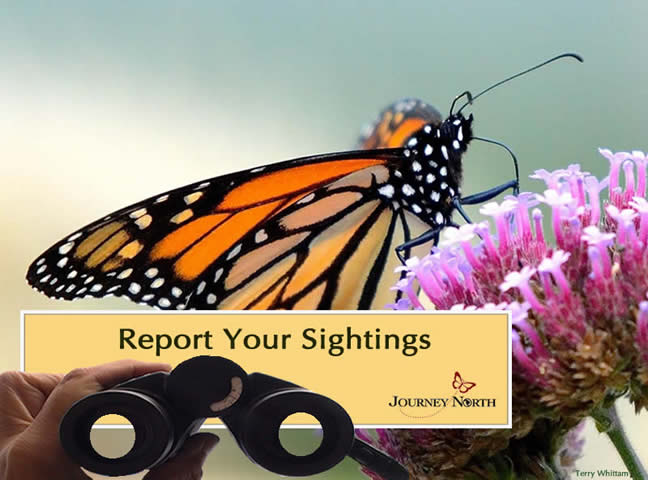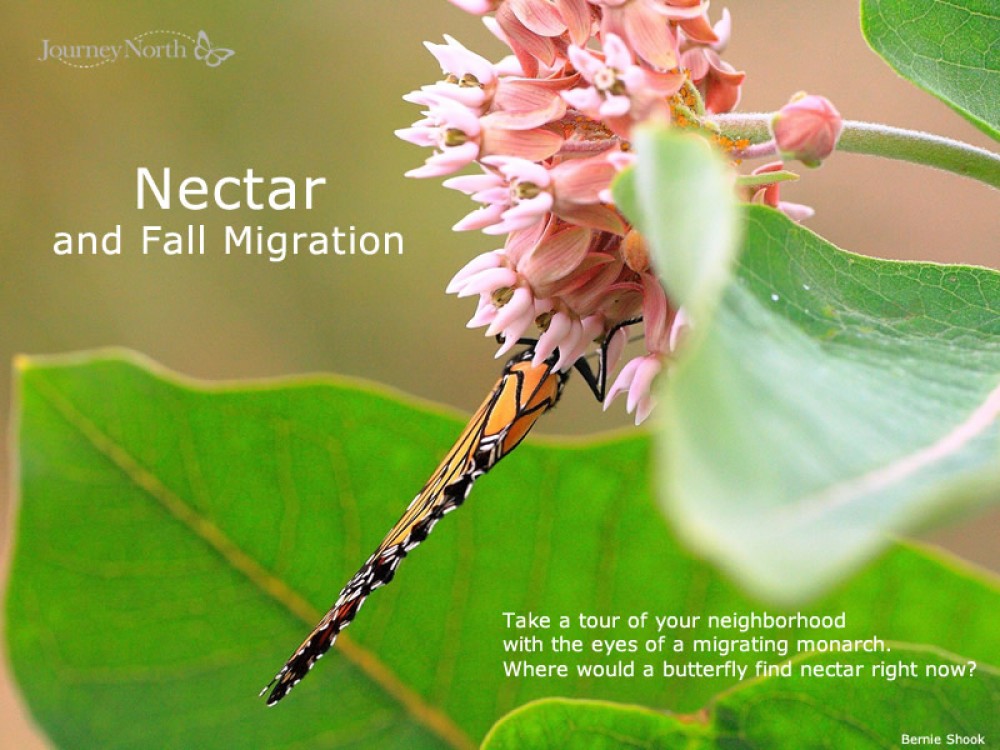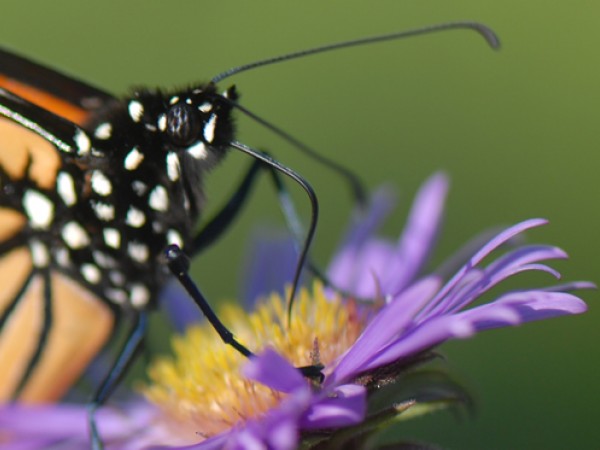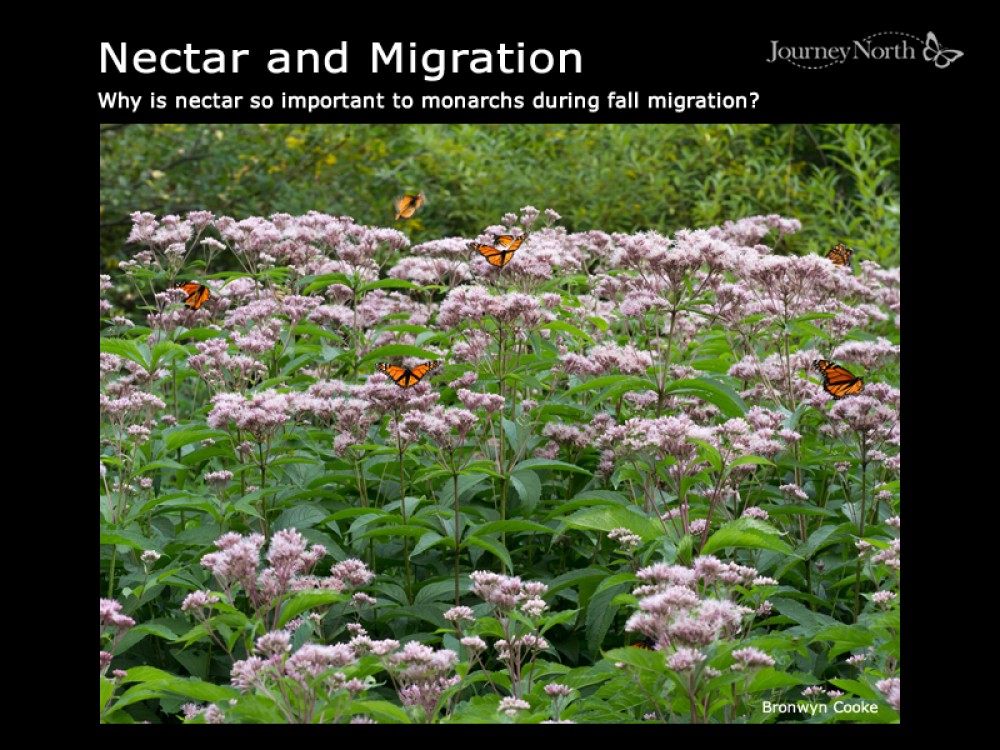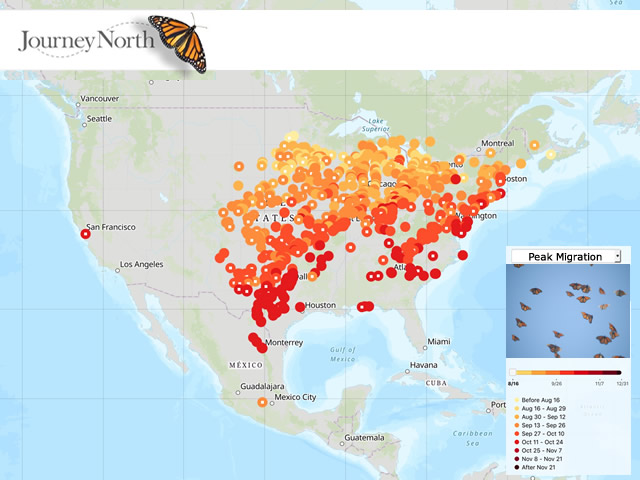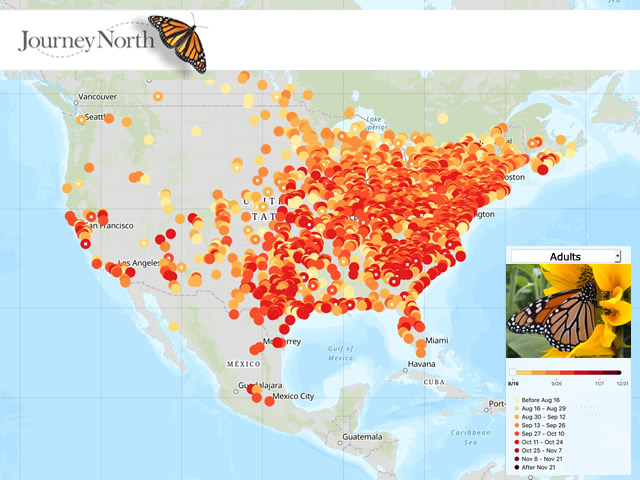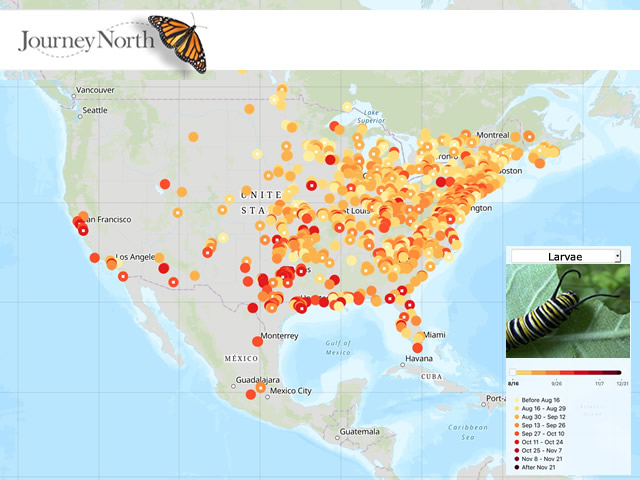On the Nectar Trail
On the Move
Monarchs are on the move — flying, nectaring, and roosting. This year's large numbers are a hopeful sign, and the migration is continuing to pick up steam.
"Everywhere I look in our Vermont rural neighborhood there are monarchs flying and feeding on wildflowers. A big year like I've only seen once before back in the 1990s." Mt. Holly, Vermont on September 4, 2018
"There were too many to count in a large field of mostly goldenrod. Near sunset the monarchs floated around the trees to roost for the night." Erie, Pennsylvania on September 5, 2018
Fueling Up, Heading South
Monarchs are nectaring intensley along the migration trail. One male was captured at a tagging station in Ontario. When he was recaptured 7 days later his weight had increased by 53%.
"Just look at his abdomen!" said Terry Whittam.
Building Lipids
During fall migration, monarchs must find the food they need to fuel their flight - and also to build the lipid reserves they'll need for overwintering. The butterflies eat little to nothing during their 5-month stay in Mexico. A scientific paper by Dr. Lincoln Brower shows how lipid reserves increase as the monarchs move southward.
Stopover Habitat
The places monarchs feed and rest during migration are called stopover sites. Help monarchs by planting flowers that bloom late into the fall such as the Mexican Sunflower, Tithonia rotundifolia.
- Are you providing habitat for migrating monarchs? Report to the Habitat Map and post a picture.
Fall Monarch Migration 2018
Please report all monarchs you see:
- Adults
- Eggs & Larvae
- Overnight Roosts
- Peak Migration Events


